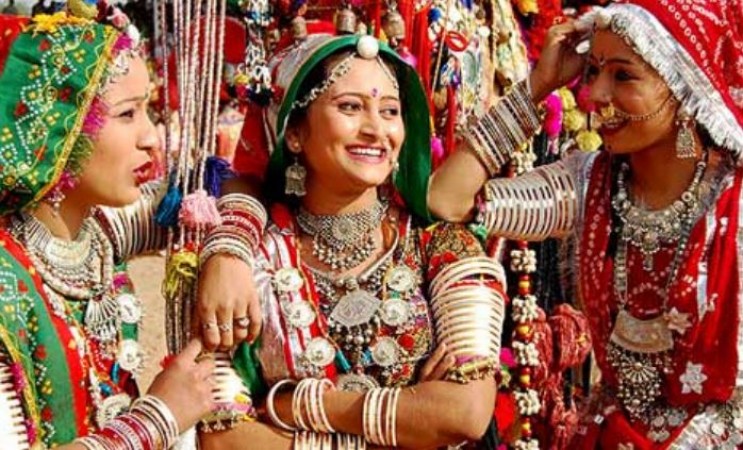
Navratri is a vibrant festival celebrated across India, with particularly grand festivities in West Bengal and other eastern regions. This festival is a powerful symbol of reverence for female energy, which Hindu philosophy recognizes as the source of creation and management of the universe.
Navratri, the festival of nine nights, begins today, October 3rd, 2024, inviting people to partake in a celebration rich with tradition and spirituality. This vibrant festival holds a special place in the hearts of Hindus across India, serving as a heartfelt tribute to the divine feminine energy embodied in Goddess Durga and her nine magnificent forms, each representing different aspects of life and strength.
Yet, Navratri is much more than a religious observance; it is a cultural extravaganza that showcases the diversity and richness of Indian heritage. Streets and homes are adorned with colorful decorations, and the air resonates with music and dance, reflecting the joy and enthusiasm of the participants. Each day is marked by specific rituals, including fasting, prayer, and elaborate celebrations, uniting communities in a shared experience of devotion and reverence.
As people don vibrant traditional attire and engage in lively dances like Garba and Dandiya, the festival becomes a symphony of colors, sounds, and spiritual fervor. Navratri captures the essence of India's cultural mosaic, weaving together threads of tradition, devotion, and communal harmony that transcend borders and generations. This annual celebration is a time for reflection, renewal, and a powerful reminder of the strength and resilience of the feminine spirit in society.
As more Indians migrate for work, the celebration of Durga Puja has evolved beyond its traditional roots in Bengal and parts of Bihar and Assam. Today, the Puja Pandals can be found in various states across the country, transforming Durga Puja into a truly national festival. For instance, I grew up in a hilly area of Jammu, where I experienced the vibrant Durga Puja celebrations hosted by Bengali families working on Jammu and Kashmir's first mega hydropower project.
The festival's scenes are captivating—women creating rhythmic sounds to ward off evil, engaging in Sindhoor Khela, and dancing with glowing pots. These sights left a lasting impression on my childhood. Interestingly, my daughter now attends the local Durga Puja celebrations, blissfully unaware of its origins in Bengal.
In North India, the focus of Navratri shifts towards devotion rather than exuberant celebration. During these nine days, both men and women often fast, abstaining from grains. Each person's fasting practices vary, with notable figures like Prime Minister Narendra Modi choosing to consume only coconut and water. Devotees pray to the Goddess for their family's well-being and grow wheat grass in earthen pots, symbolizing the abundance bestowed by divinity.
The rituals of Navratri are steeped in symbolism, with the nine days representing the nine stages of a woman’s life. Each day is dedicated to a specific form of feminine energy, illustrating the evolution of women's consciousness. Beyond the joy and festivities, Navratri serves as a powerful reminder of the importance of women in society. It calls upon the inner strength of Indian women, urging them to recognize their worth and empowering them to embrace their fierce nature, akin to Goddess Kali, to vanquish evil.